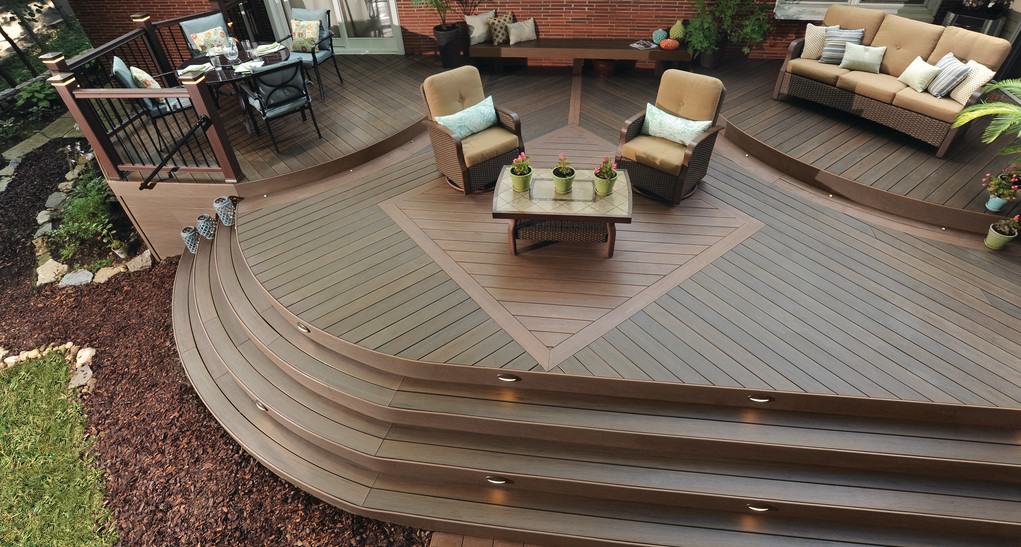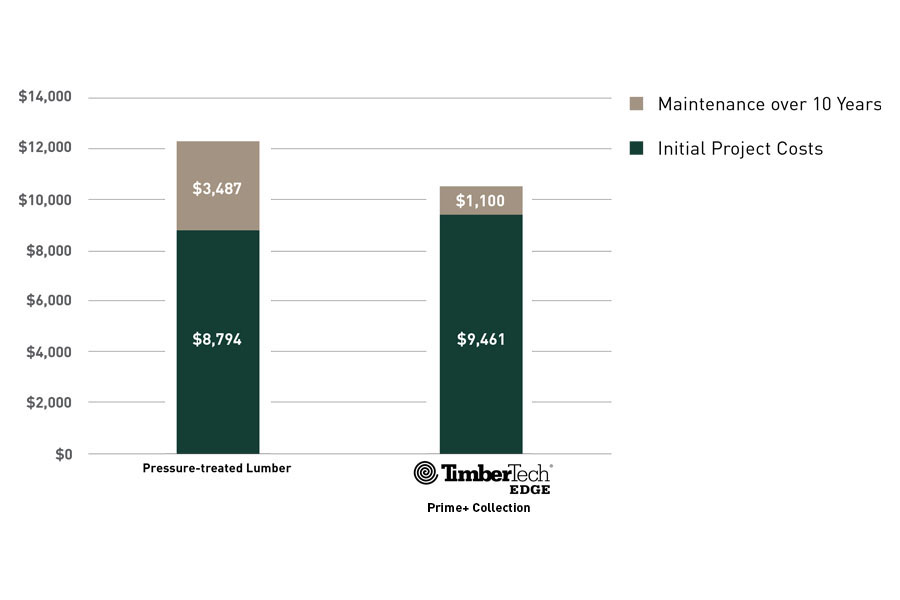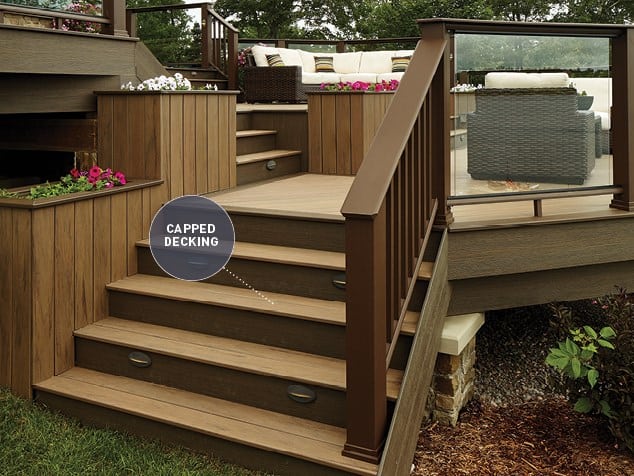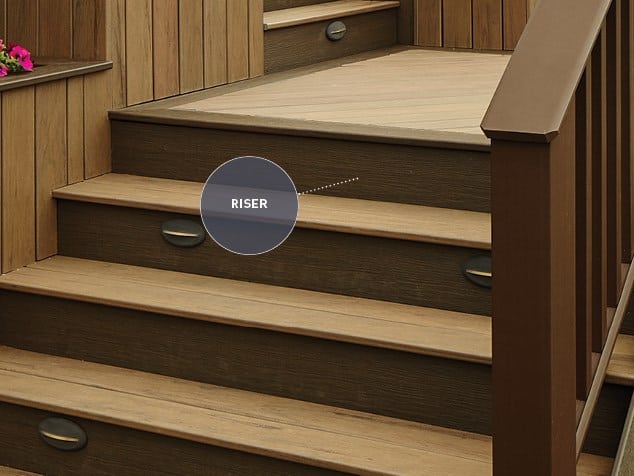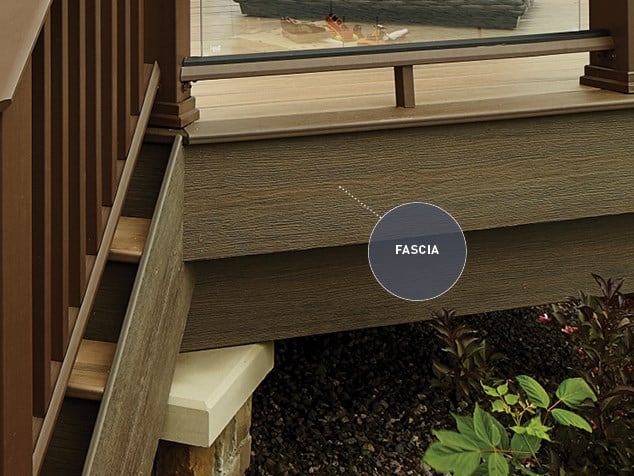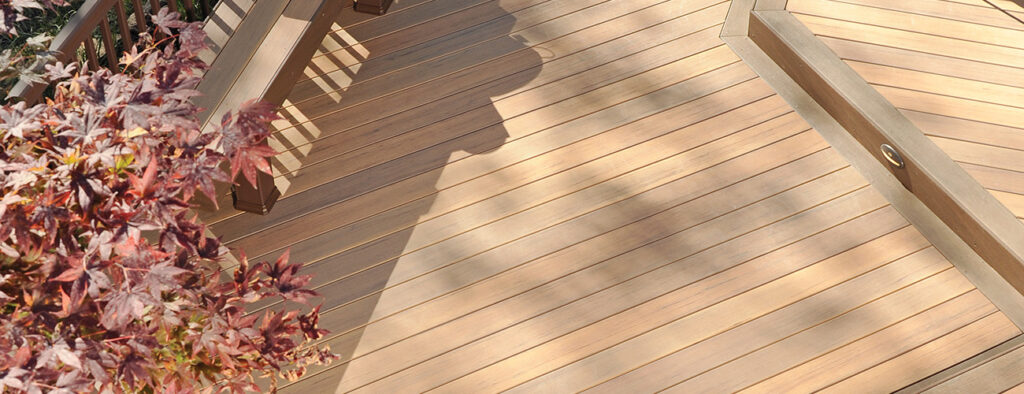Risers, fascia, grooves, and variegation… what does it all mean? When we think of decking, we usually consider the whole instead of the individual parts. Yet familiarizing yourself with those parts can give you more insight into designing your perfect outdoor space.
In this post, we’ll review some common decking lingo, so you can deck smarter.
Anatomy of Our Composite Deck Boards
At TimberTech, we offer two different types of composite deck boards with features that influence installation (and thus their final look):
Grooved Boards

Boards with capped grooves along both sides that are secured with hidden fastening under the surface.
Square-Shouldered Boards

Solid (more on that below) boards that utilize top-down fasteners that are typically color-matched screws and plugs.
Composite Deck Boards’ Profiles
These deck boards also have unique profiles — i.e., they’re constructed differently:
Full Profile

Solid, sturdy boards with a flat bottom similar to traditional lumber for strength and a more solid feel underfoot.
Scalloped Profile

Boards with a special scalloped bottom that reduces weight without sacrificing durability or strength.
The Decking Surface
What’s underneath is just as important as what’s on the surface of each one of our composite deck boards. Here are two crucial components of what makes every TimberTech board so unique (and beautiful):
Capping

A strong, protective layer on all TimberTech boards for unrivaled protection against scratches, stains, moisture, and mold.
Variegation

The highlight and lowlight coloring in composite deck boards that resemble real wood — our TimberTech PRO line features some of our most dramatic variegation.
Cost of Our Composite Deck Boards
Determining Material Cost
Several factors will influence the material cost of a TimberTech deck, such as:
- Whether you choose capped composite (TimberTech PRO® and TimberTech EDGE®) or capped polymer (TimberTech AZEK®) decking.
- Which collection you choose across the product lines.
Jump into our decking overview to find the right building material for your project.
Determining Overall Cost
Additional factors will influence the overall cost to build your deck, such as:
- Initial stain and seal costs.
- Deck material costs.
- Labor to install.
- Substructure with labor.
- Excess material and fasteners needed.
Plus, over time, traditional wood will need maintenance about every 10 years. TimberTech composite decking doesn’t require costly maintenance — so you save your wallet and your back.
Average Cost of Composite Deck Boards vs. Wood*
To understand how TimberTech composite decking translates to cost savings in the long run, it’s helpful to compare costs. Evaluate estimated upfront and 10-year costs between TimberTech decking and wood below.
Pressure-Treated Lumber vs. TimberTech® EDGE Prime+® Boards
*NOTE: The estimated average cost of capped composite deck boards and pressure-treated lumber decking costs are based on the national average for a 16’ x 20’ deck. Meant for visual representation only. Actual costs may vary.
As the numbers show, the initial average cost of composite deck boards in the TimberTech EDGE Prime Collection is only marginally more than a pressure-treated deck.
Ipe Premium Hardwood vs. TimberTech AZEK® Vintage Collection®
*NOTE: The estimated average cost of capped polymer deck boards and Ipe hardwood decking costs are based on the national average for a 16’ x 20’ deck. Meant for visual representation only. Actual costs may vary.
With Vintage boards, the total cost of building and maintaining your deck is significantly less after 10 years.
Bringing it all Home
Of course, it takes a lot of composite deck boards to make an actual deck. The final, show-stopping result, however, has a few more components to consider:
Now that you’re practically a decking pro, you can confidently explore and choose from our distinct decking lines to find the one that best fits your style and space.

